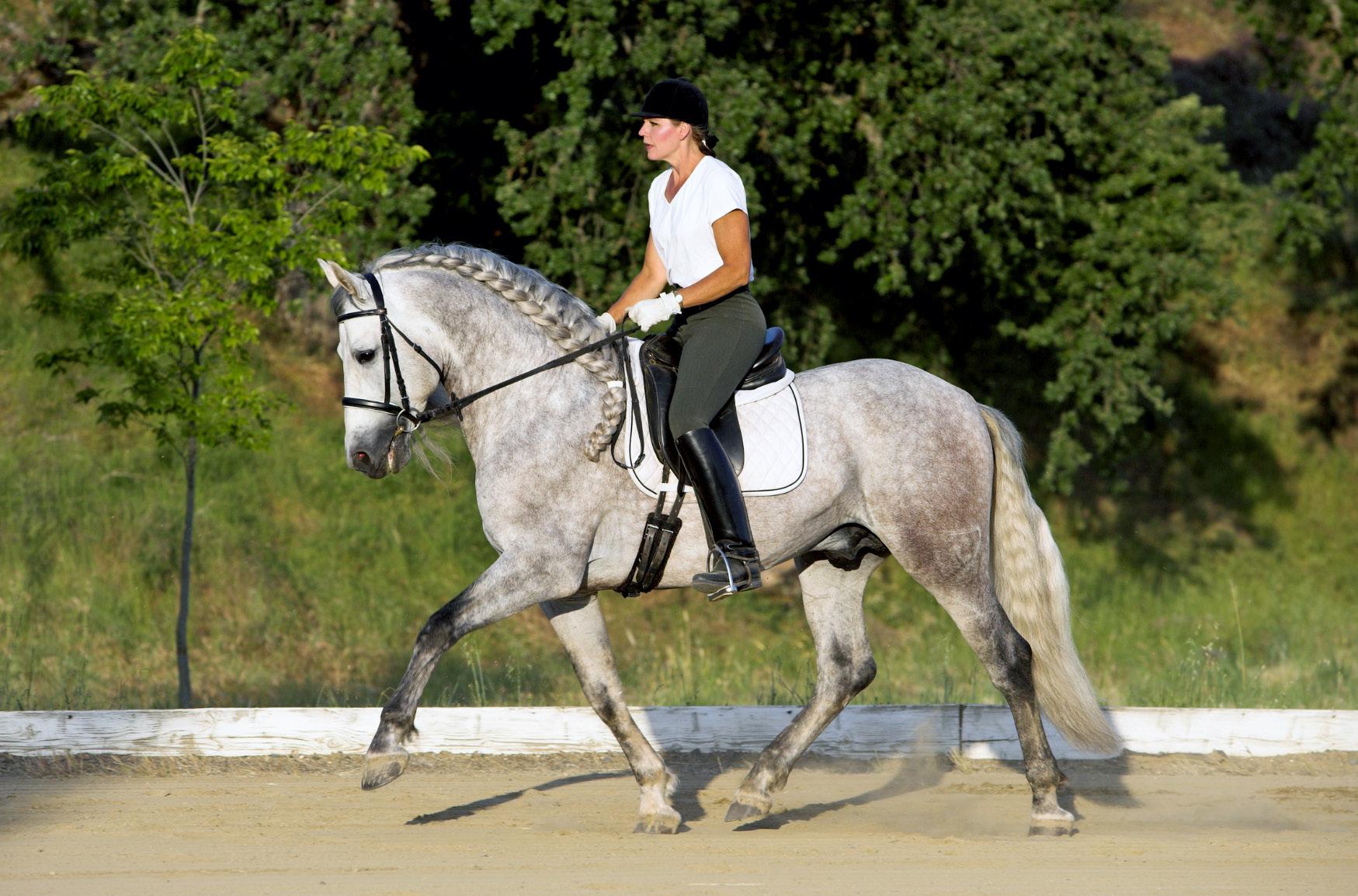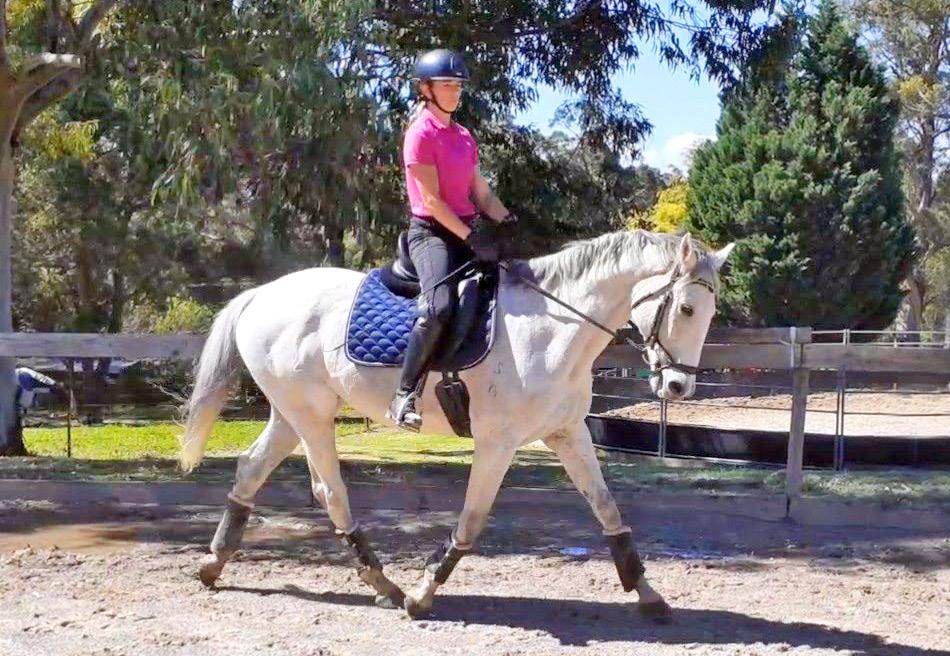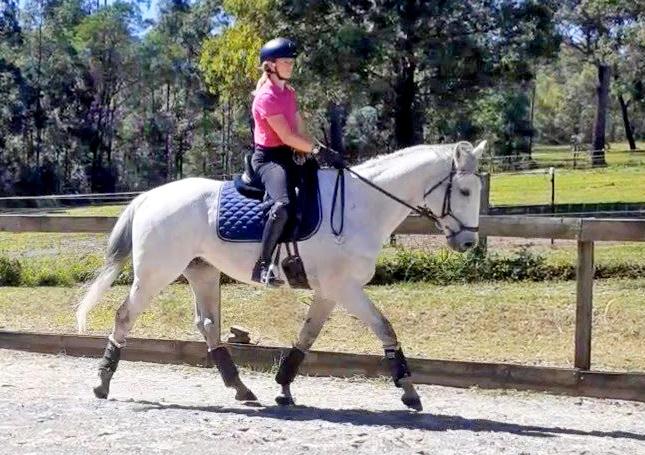
4 minute read
Coaching with Christine: Rising off your feet
COACHING WITH CHRISTINE
Rising off your feet
If you want to improve your rising trot, the trick is to rise off your feet, not your seat, writes CHRISTINE ARMISHAW.
Rising trot is something most riders learn to do pretty early on in the piece. The familiar up, down, up, down two-beat rhythm inevitably becomes second nature and the conscious effort required to maintain it often drops to a minimum while the rider puts their thought power into other areas. However, what you might not know is that you've possibly been doing it wrong this whole time. What most riders do is sit for one beat, then for the next beat bounce up off the horse's back, using the horse’s momentum, before sitting sit back down and then repeating the process. However, what you instead need to be doing is using your own body strength to lightly push up against the stirrups off the balls your feet - the idea being to rise off your feet, not your seat. By doing this you firstly become an easier load for your horse to carry, and secondly, you start to take ownership of the trot rhythm.
Once you take ownership of the trot, you take control of the speed. If you've ever felt the trot getting faster and faster without you asking your horse to do so, or on the other hand if they wind down to too slow, it's because you're riding your horse's rhythm rather than setting your own.
I remind my clients that when riding horses there is always a leader and a follower; if you don't make yourself into the leader, then by default you become the follower. This is not to be confused with being the horse’s ‘boss’, but rather that as the leader you choose and set the direction, rhythm and tempo at any given time – because if you don't set it, your horse will!
When you set the rhythm of your rising trot by pushing off your feet, not your seat, it unlocks a way of riding in which you don't have to nag your horse to keep moving. Squeezing your leg against the horse’s side should be the
way you get the hindquarters or ‘engine’ turned on and engaged, your initial cue for forwards motion, while the speed and tempo you rise at becomes the metronome for your horse to match.
An exercise for a horse that moves too quickly is to ask for the trot, then begin to count out loud at a slightly slower rhythm then your horse tends to travel. Rise to your own rhythm by pushing off your stirrups and hovering in the upward phase of the rise for half a beat longer. The aim is to have the horse’s legs match your rise, so you slow their leg speed down a little and instead encourage them to reach out a little further and cover more ground. To start with, this can feel a bit uncomfortable because you and your horse may temporarily be a bit out of sync, but bear with me here. Keep the count, and continue with the slower rise and your horse will start to sync up with you.
To speed up, count a quicker rhythm out loud, change your rise to match and watch as your horse adjusts their stride. Once you've mastered what this feels like, you can play around with making the trot bigger and smaller every ten to twenty strides. Actually pick a stride number to work to, count out loud and stick to the plan until you nail it. It might take a few tries, but that’s totally normal especially on the first few attempts. Keep working at it and enjoy the magic feeling of your horse adjusting their rhythm in response to you adjusting your own body.
A variation on this if you ride in an arena, is to trot some big, ground-covering steps down the long sides, and then reduce the trot to the smallest trot steps you can manage without breaking into a walk on the short sides. You’re aiming to feel a distinct contrast between both.
Remember, you are striving to move between big and small trot, not just fast and slow. Be careful not to simply rise faster; many horses are quite good at taking tiny, quick, washing machine type steps. Rise bigger and linger in the upward phase of the rise for half a beat longer to encourage your horse to step out further and cover more ground with each step. Have someone video you from the ground so you can watch to see if your horse is reaching through further with the hind feet. They should reach far enough forward to be able to step into the footprints left by the front feet and, if they're really covering the ground, they may even reach further forward than that as you rise off your feet, not your seat.
Want more? Christine’s got you covered with a video over at Equestrian Hub.
FACING PAGE: Once you take ownership of the trot, you take control of the speed. Images below by Oliver Armishaw-Webb

A big trot in which the hind feet are about to step into the hoof prints left by the front feet.











